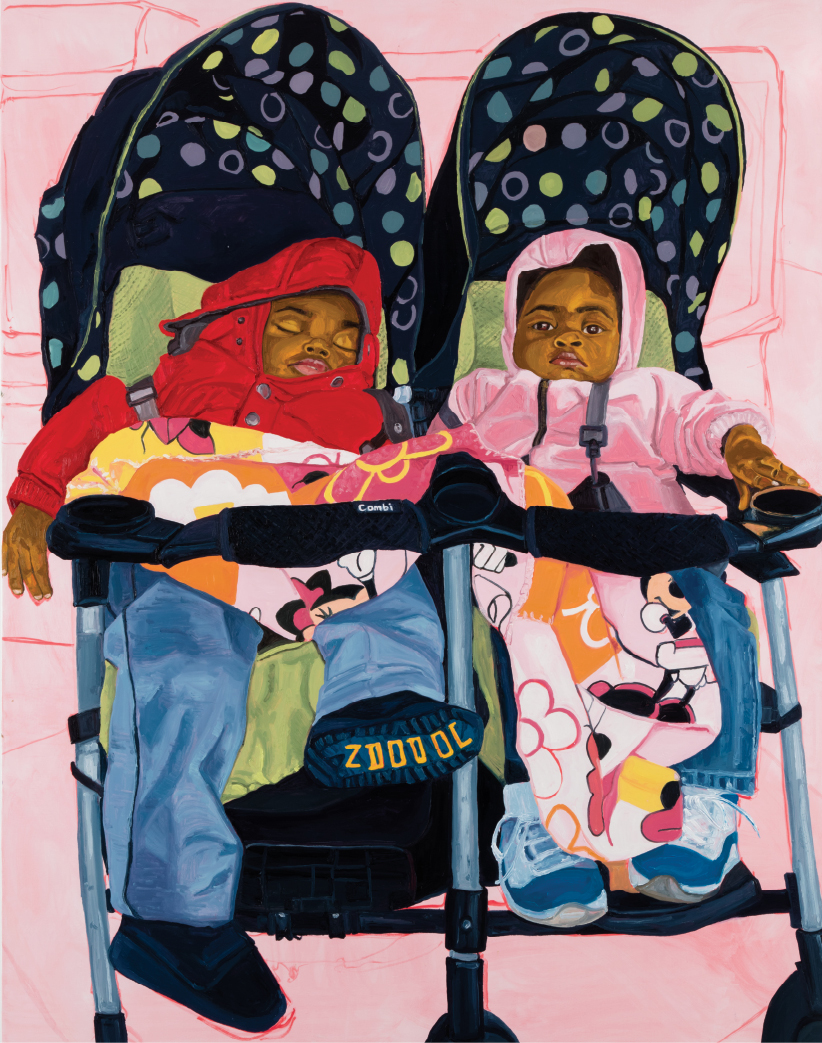Painting portraits of black men using the female gaze
Jordan Casteel applied to Yale’s MFA program on a dare from her mother. “She and I were googling ‘best art schools,’ ” says the 28-year-old Colorado native. “Yale popped up first. I applied with no expectations.” The university responded favorably to the young artist’s leap of faith, and three years after graduating, Casteel still considers the experience a formative one. “I was lucky enough to grow up with work by Romare Bearden, Faith Ringgold, and Jacob Lawrence,” she says. “But it wasn’t until I got to school that I found artists like Kerry James Marshall and Henry Taylor. They helped me formulate my own voice, my own style.”
Like Marshall and Taylor, Casteel focuses on representations of the black body. Where she differs is in perspective: her canvases are informed by the female gaze, and as a result, she tends to focus on men. Pushing against the preposterous yet pervasive generalizations of black men as aggressors, the artist infuses her subjects with tender contradictions, such as Miles and Jojo, a 2015 painting of a father and son with a toothy, stuffed monster propped in the son’s arms. The intimacy of the work can be traced to her painting process, which begins with photography. “I take hundreds of images,” Casteel says. “Very rarely does a singular shot determine the whole composition.” Casteel’s muses have varied from actors to friends, often posed in cramped domestic interiors in various states of undress.
Recently, she’s begun approaching strangers she encounters on the street during her commute from her apartment in Harlem to her studio in Brooklyn. “So often in New York we just walk by each other,” Casteel says. “I wanted to find a way to engage.” To her surprise, most have been open to posing for her camera. “When I ask someone if I can take their picture, I have to step outside my comfort zone,” says the self-proclaimed introvert. “I think if that discomfort went away, I would find something else to paint. For me, it’s about this kind of two-sided generosity.”
For her solo show at New York’s Casey Kaplan gallery in September, Casteel plans to unveil a new series inspired by Harlem nights. Such scenes include a painting of a man with dreadlocks walking two small dogs down the sidewalk and an elderly man, illuminated by an open door, lounging in a plastic lawn chair. As with all her shows, Casteel will invite her subjects to the opening. “A huge part of my work comes from a desire to create a community,” she says. “The paintings have the lifespan of an object, but the relationships have a history, a life, of their own.”







